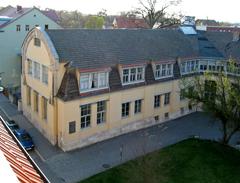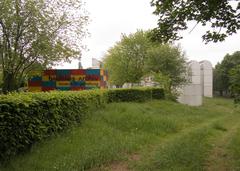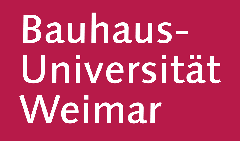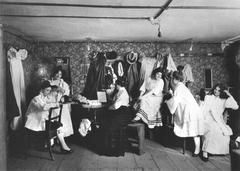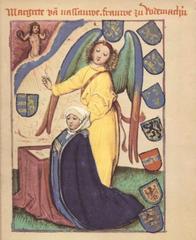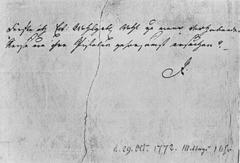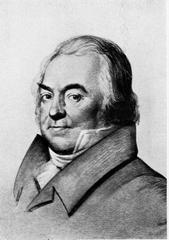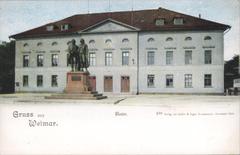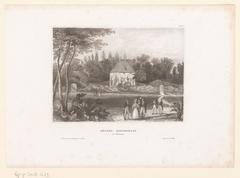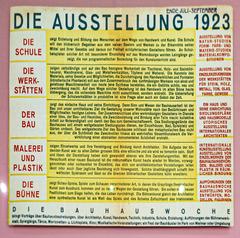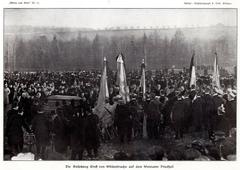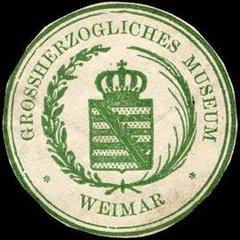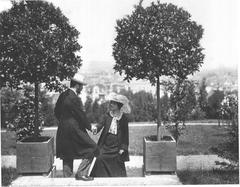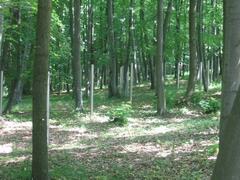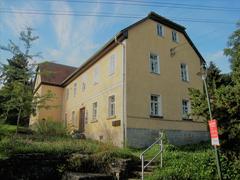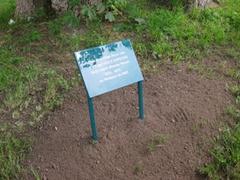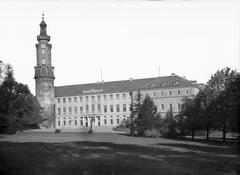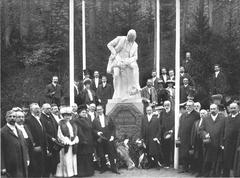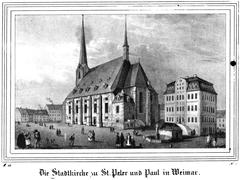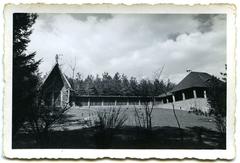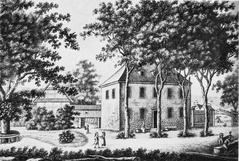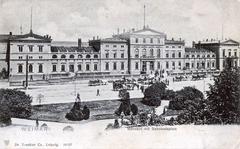
Wittumspalais Visiting Hours, Tickets, and Complete Guide to Weimar Historical Sites
Date: 04/07/2025
Introduction
The Wittumspalais, located in the heart of Weimar, Germany, stands as a monument to late Baroque architecture and the intellectual vibrancy that defined the Weimar Classicism era. Constructed between 1767 and 1769, this palace became the residence of Duchess Anna Amalia of Saxe-Weimar-Eisenach and a renowned hub of Enlightenment culture, hosting leading figures such as Goethe and Schiller. Today, the Wittumspalais invites visitors to explore beautifully preserved interiors, including the famed Grüner Salon, and offers an immersive journey through Germany’s cultural and literary history.
This comprehensive guide provides all the essential information for planning your visit: from up-to-date visiting hours and ticketing details to accessibility, travel tips, and insights into nearby attractions. As part of the UNESCO World Heritage-listed “Classical Weimar” ensemble, the Wittumspalais is a gateway into Weimar’s rich cultural legacy, with ongoing exhibitions and educational programs enhancing every visit.
Table of Contents
- The Palace’s History and Cultural Significance
- Practical Visitor Information
- Special Events and Exhibitions
- Notable Rooms and Features
- Visitor Services and Amenities
- Nearby Weimar Historical Sites
- Frequently Asked Questions (FAQ)
- Conclusion and Travel Tips
- Sources
The Palace’s History and Cultural Significance
Origins and Architectural Development
Situated at Am Palais 3, the Wittumspalais exemplifies the refined urban Baroque style of the late 18th century. Initially commissioned by Jakob Friedrich von Fritsch, a privy councillor of the Duchy of Saxe-Weimar-Eisenach, the palace was designed as a stately family residence, featuring elegantly proportioned rooms and once-extensive gardens (museum.de). Urban expansion in the 19th century led to the loss of these gardens, yet the palace’s architectural integrity remains a testament to the era’s tastes (weimar.de).
The Residence of Duchess Anna Amalia
The palace’s status transformed dramatically in 1774 when Duchess Anna Amalia, one of the few female regents in the Holy Roman Empire, acquired it after a fire damaged the main ducal residence. She made the Wittumspalais her home, turning it into a vibrant center of intellectual and artistic life. Under her influence, the palace’s interiors were redesigned, featuring ceiling paintings by Adam Friedrich Oeser and spaces suited for salons and gatherings (de.wikipedia.org).
Hub of Enlightenment Culture
Anna Amalia’s “Tafelrunden” (round table evenings) became legendary. She welcomed artists, writers, and thinkers—among them Goethe and Schiller—to discuss literature, art, music, and science. The Green Salon (Grüner Salon) and the Tafelrundenzimmer (Round Table Room) remain as evocative reminders of these gatherings, preserving original decoration and artistic works (weimar-erkunden.de; Google Arts & Culture).
Later Transformations and Preservation
After Anna Amalia’s death in 1807, the palace was used for various purposes, including as a Freemason lodge, a site for the Thuringian Landtag, and, later, as studios for notable artists (de.wikipedia.org). Restoration by Grand Duke Carl Alexander in the 1870s set the foundation for its current function as a museum. Despite sustaining damage in World War II, the Wittumspalais was restored and reopened in 1949 as a museum, now managed by the Klassik Stiftung Weimar (museum.de).
UNESCO Recognition
In 1998, the Wittumspalais was designated as part of the “Classical Weimar” UNESCO World Heritage Site, underscoring its universal value and its pivotal role in the city’s intellectual and artistic heritage (whichmuseum.co.uk; planetware.com).
Practical Visitor Information
Location and Directions
- Address: Am Palais 3, 99423 Weimar, Germany
- Central Position: Easily reached on foot from Weimar’s central attractions, including the Deutsches Nationaltheater, Schillerstraße, and the Bauhaus-Museum.
- Public Transport: Local buses (lines 1–6) stop near the palace. Weimar’s main train station is about a 20-minute walk or short bus ride away (Frommer’s).
Visiting Hours
- Summer Season (21 March – 1 November):
Tuesday–Sunday, 10:00–18:00
(Last admission: 17:30) - Winter Season (2 November – 20 March):
Tuesday–Sunday, 10:00–16:00
Closed Mondays and public holidays.
Note: The Wittumspalais will close for renovation starting 23 June 2025. Check the official website for updates on reopening.
Ticket Prices
- Adults: €7.00
- Reduced (students, seniors): €5.00
- Pupils (16–20 years): €3.00
- Children under 16: Free (verify on the official ticketing page)
- Special Offers: Free entry on International Women’s Day (8 March) and the Day of Repentance and Prayer (19 November).
- Combination tickets: Available for multiple Weimar sites (Destination the World).
Purchase: Tickets can be bought onsite or online at the Klassik Stiftung Weimar website.
Accessibility
The palace’s historic structure means some areas have limited accessibility for wheelchair users. Barrier-free features are present where possible, and a German Sign Language video is available on the website. Contact the museum ahead for specific needs (Klassik Stiftung Weimar).
Guided Tours and Audio Guides
- Guided Tours: Offered in German; English tours available on select dates. Advance booking recommended, especially for groups (Weimar.de).
- Audio Guides: Available in multiple languages, detailing historical context and room highlights.
Best Times to Visit
- Quieter Times: Weekday mornings.
- Seasonal Highlights: Spring and summer see more events and longer hours.
Special Events and Exhibitions
The Wittumspalais hosts temporary exhibitions, concerts, and educational workshops year-round. The adjacent Schönfärbe (historic dye house) and Kammerfrauenhaus are used for educational and community programs, continuing the palace’s tradition as a center for learning and culture (Trip By Trip).
Check the events calendar for current offerings.
Notable Rooms and Features
- Grüner Salon (Green Salon): Preserved parlour with original 18th-century décor and ceiling paintings by Adam Friedrich Oeser.
- Tafelrundenzimmer (Round Table Room): The setting for Anna Amalia’s legendary salons, where Goethe and Schiller engaged in lively debate.
- Festsaal (Banquet Hall): Used historically for political gatherings, social functions, and art exhibitions.
- Multimedia Exhibition: On the ground floor, interactive and audio-visual displays narrate the palace’s history.
Visitor Services and Amenities
- Information Desk: Multilingual support and brochures.
- Restrooms and Cloakroom: On site; lockers available for large bags.
- Bookshop: Souvenirs, books, and postcards related to Weimar Classicism (Frommer’s).
- Photography: Non-flash photography generally allowed; observe room-specific restrictions.
- Courtyard: Recently renovated, ideal for group breaks and reflection.
Nearby Weimar Historical Sites
As part of the UNESCO “Classical Weimar” ensemble, the Wittumspalais is close to:
- Goethe’s Residence
- Schiller’s Residence
- Duchess Anna Amalia Library
- Weimar City Palace
- Bauhaus-Museum
- Park on the Ilm and Goethe’s Garden House
All are within easy walking distance and together offer a comprehensive view of Weimar’s cultural riches (World Heritage Sites).
Frequently Asked Questions (FAQ)
Q: What are the opening hours of the Wittumspalais?
A: Tuesday–Sunday, 10:00–18:00 (summer), 10:00–16:00 (winter); closed Mondays.
Q: How much are tickets and where can I buy them?
A: Standard tickets are €7 (adults), €5 (reduced), €3 (pupils 16–20), free for children under 16. Buy onsite or via the official website.
Q: Is the Wittumspalais accessible for visitors with disabilities?
A: Partially; some areas may be challenging. Contact the museum ahead for assistance.
Q: Are guided tours available in English?
A: Primarily in German, with English tours on select dates. Audio guides in multiple languages are recommended.
Q: Can I take photos inside?
A: Yes, non-flash photography is allowed except where otherwise indicated.
Conclusion and Travel Tips
A visit to the Wittumspalais offers an authentic connection to Weimar’s golden age of culture and intellect. With its stunning interiors, accessible visitor services, and central location among Weimar’s major historical sites, it is an essential stop for anyone interested in German history and the legacy of the Enlightenment. For the fullest experience:
- Plan your visit around current opening hours and renovation schedules.
- Purchase tickets online during peak seasons.
- Use audio guides for deeper engagement, especially if you prefer English-language information.
- Explore nearby UNESCO sites to enrich your cultural itinerary.
- Download the Audiala app for exclusive audio guides and interactive maps.
For updated information, special events, and travel inspiration, visit the Klassik Stiftung Weimar website and follow Weimar’s cultural channels.
Sources
- museum.de
- weimar-kennenlernen.de
- frommers.com
- klassik-stiftung.de
- de.wikipedia.org
- whichmuseum.co.uk
- weimar.de
- Google Arts & Culture
- Destination the World
- Trip By Trip
- World Heritage Sites






